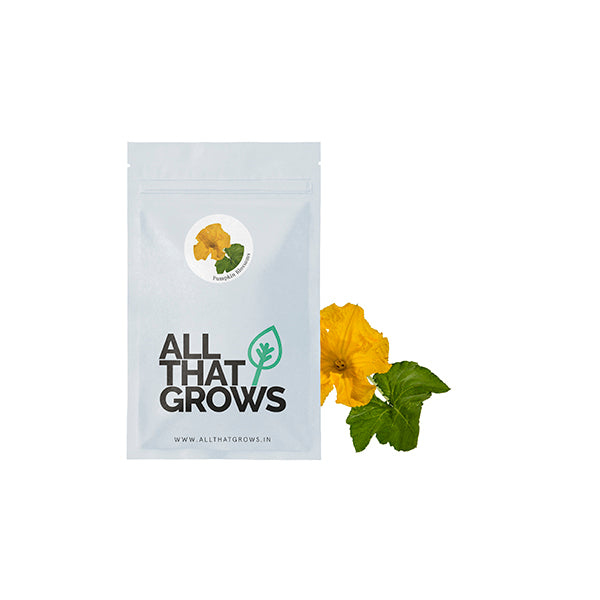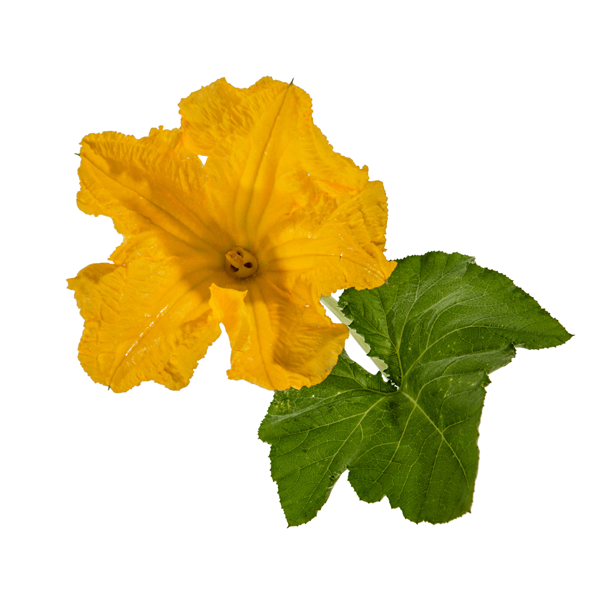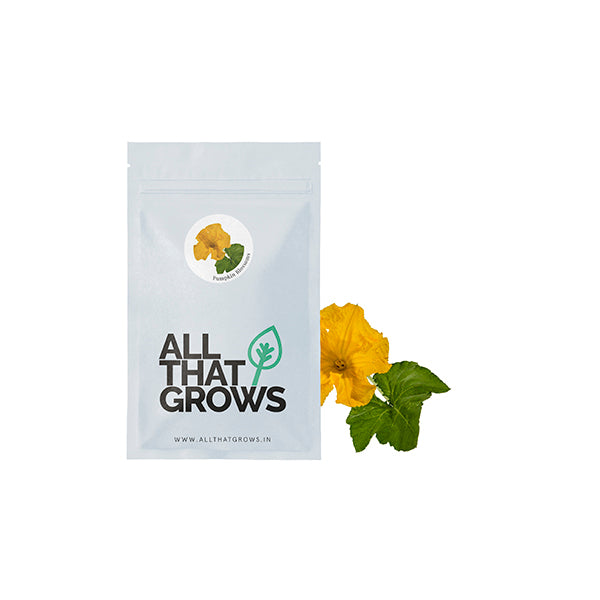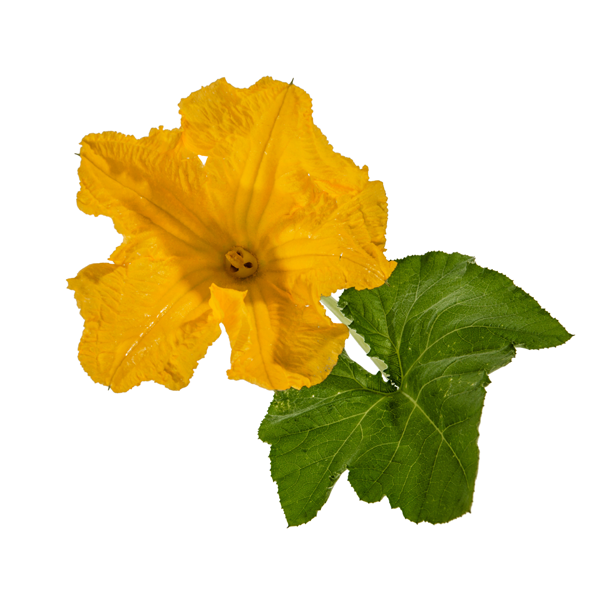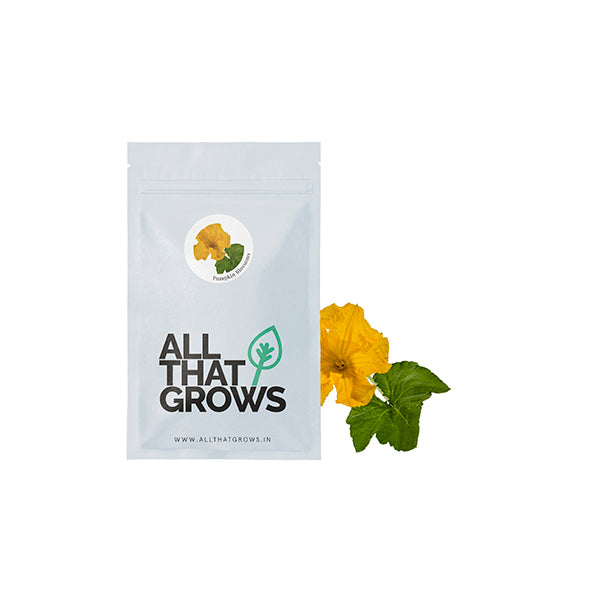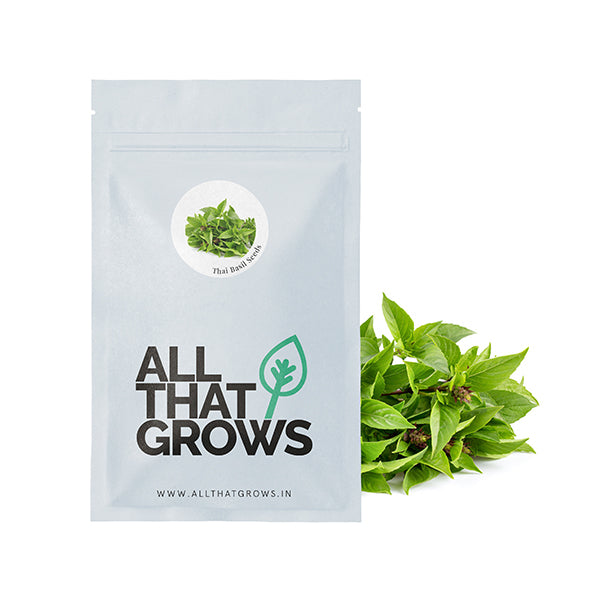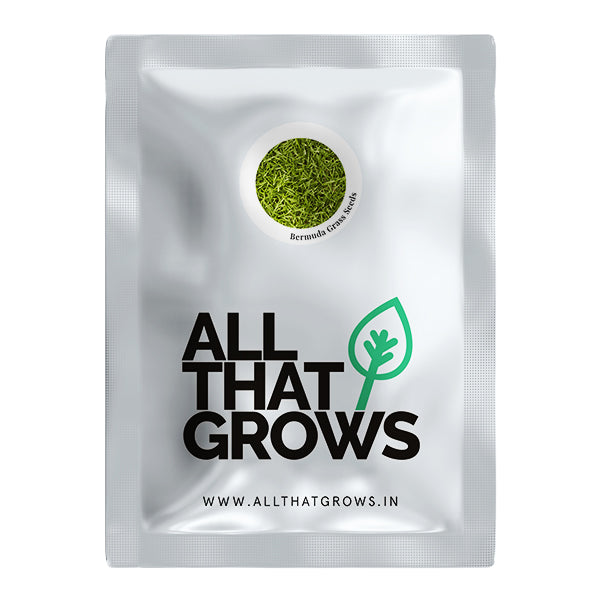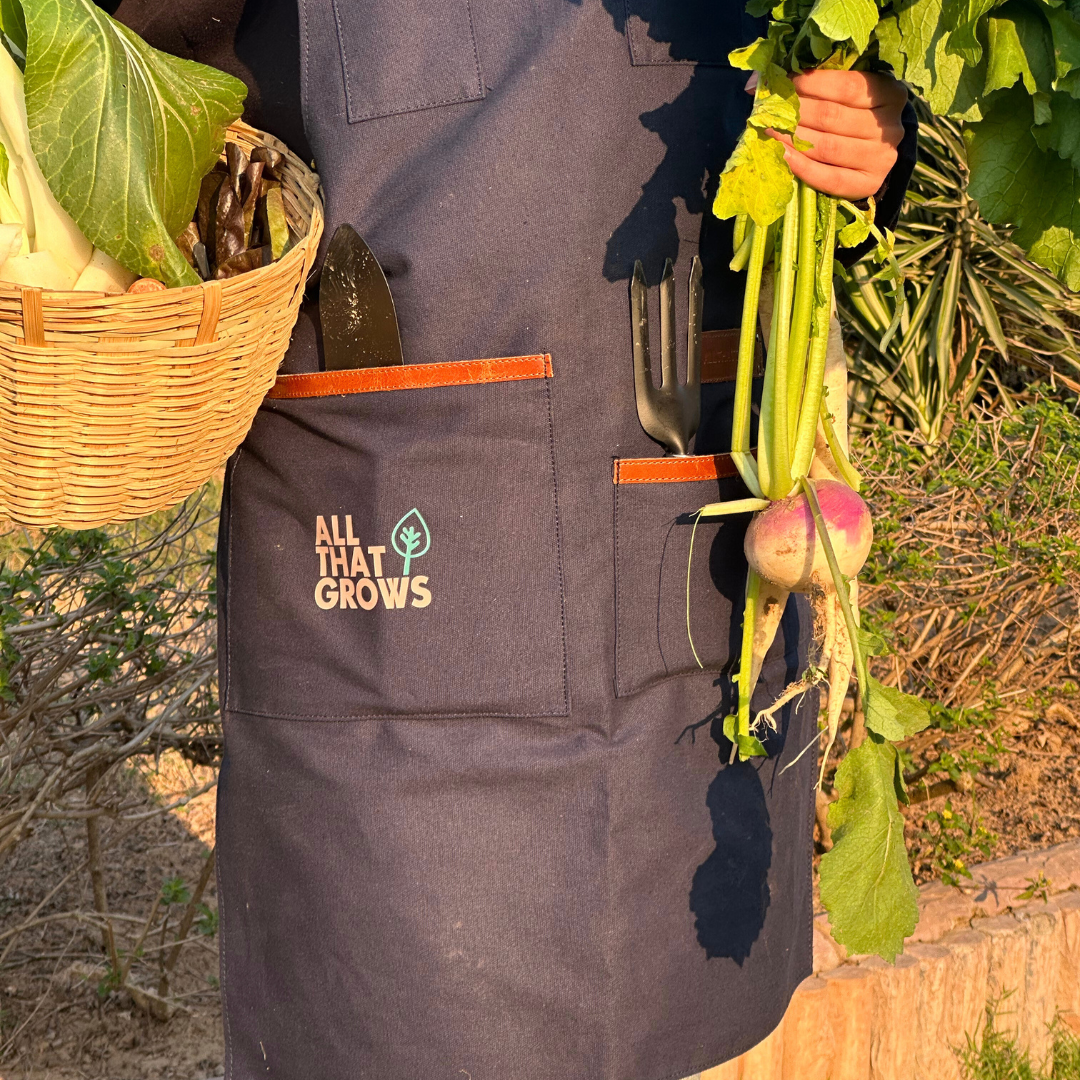- Details
- How to sow
- Reviews
Radiant yellow funnel shaped flowers are a common sight in many vegetable gardens but only a few are aware of the light and buttery taste of the these flowers. Few ways to include this delicacy is as a colorful garnish on dishes like risotto and quinoa. Olive oil goes very well with the flavor of pumpkin blossoms and enhances the nutrient quotient significantly. A part of the Cucurbitaceae family of plants just like cucumbers, squash and cantaloupes, pumpkins are widely cultivated and consumed all over the world. Though not everyone's favourite veggie, they are extremely healthy to eat.
Planting instructions
Sow seeds directly in the soil. Pumpkins are very sensitive to cold. Make sure the temperature is ideal before sowing.
Plant seeds in rows or “pumpkin hills” which are the size of small pitcher mounds. With hills, the land will warm more quickly and the seeds will sprout quickly.
This also helps with drainage and pest control. Prepare the hills in advance with old manure dug deep into the soil (12 to 15 inches). Plant the seeds 1 inch deep (4 to 5 seeds per mound). Space mounds 4 to 8 feet apart.
Your plants should develop in less than a week and sprout within 5 to 10 days. When the plants are 2 to 3 inches tall, thin to 2 to 3 plants per hill by snipping off unwanted plants.
Growing Requirements
Pests
The pumpkins that are attacked by pests may show the following signs - Plants show brown blotches or stunted and distorted growth, honeydew substance, white powdery spots on leaves, deformed (bumps) and discolored fruit and leaves, etc. Common pests that attack this crop are Squash bugs, Cucumber beetles, Aphids, Squash Vine Borer, Powdery Mildew, Anthracnose.
Soil
They prefer very rich soil that is well-drained and not too soggy. The ideal pumpkin plant soil should have a pH range of 5.5-7.5.
Spot
Choose a spot that receives plenty of sunlight to light shade
Temperature
Seeds will germinate at 15°C (60°F), but they germinate best at 29-32°C (85°F-90°F)
watering
Pumpkins are thirsty plants and need lot of water. Water one litre per week.
how to harvest
A pumpkin ripens when its skin turns a rich, strong colour (orange for most varieties). When you thumb the pumpkin, the rind will feel heavy and it will sound empty.
Press your nail into the pumpkin’s skin; if it resists puncture, it is fully ripe. Handle pumpkins very gently or they may bruise.
To harvest the pumpkin, cut the fruit off the vine carefully with a sharp knife or with the help of pruners, do not pull.
Be certain not to trim too close to the pumpkin. If you get a lot of vines and flowers but no pumpkins, you need more bees in your garden to pollinate the flowers. Seeds can last for 6 years.

The productiveness of any seed we sell is subject to your local climatic conditions*, the sowing method you adopt, and your commitment to the planting process. We give no warranty, expressed or implied, and are in no way responsible for the produce.
Please note that all our seasonal recommendations/ sowing information is as per the local climatic conditions. *For more information on the optimum conditions required for growing seeds in your region, please contact us at, hello@allthatgrows.in or Whatsapp us at, +91 8544865077
Questions & Answers
Have a Question?
Be the first to ask a question about this.





